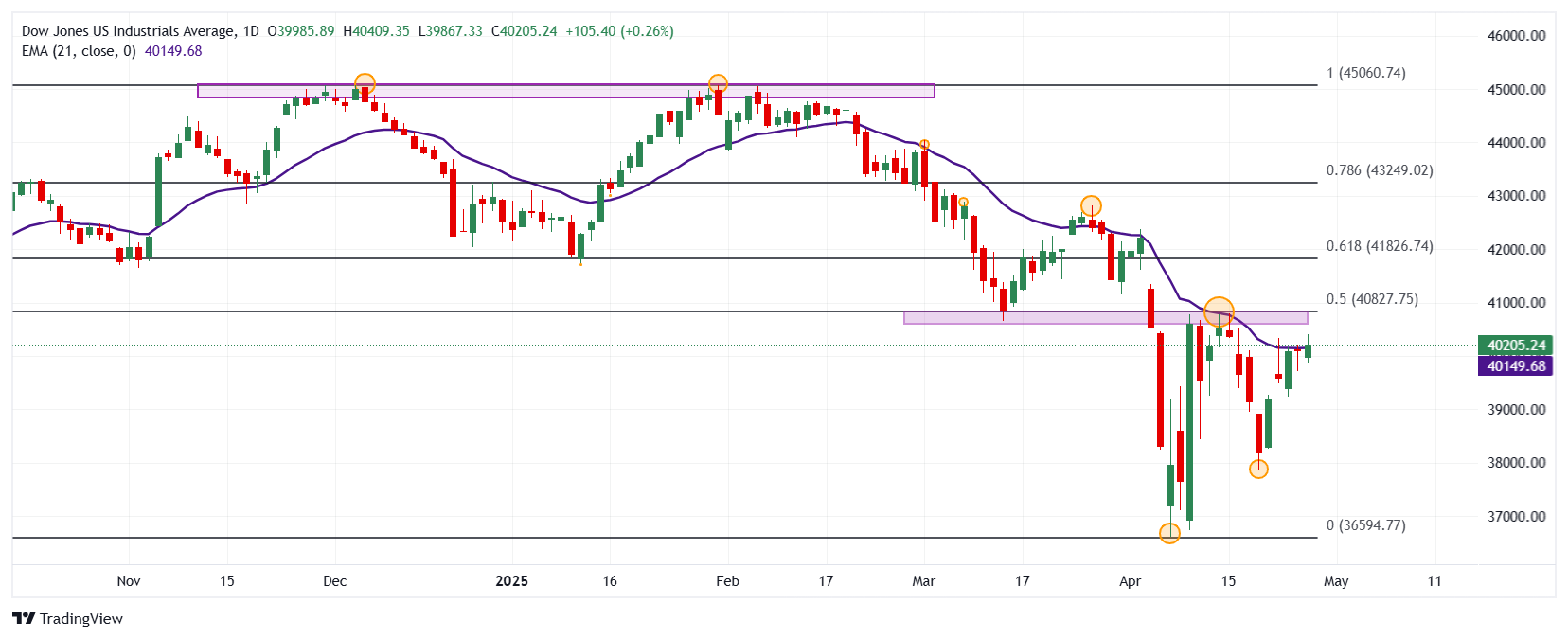- The Dow Jones wins 0.25% today, operating at the time of writing at 40,149.
- The Nasdaq 100 loses 0.17% in the day, staying within Friday’s range at 19,387.
- The S&P 500 falls 0.10% daily, currently quoting over 5,516.
- Investors will be attentive to the United States economic data as a whole that will be published throughout this week, among which the ADP Employment Report, the Gross Domestic Product and non -agricultural payrolls.
The Dow Jones reacted upwards from a minimum of the day at 39,867, where buyers attracted the index to a daily maximum in 40,409.
The industrial average Dow Jones opened at 39,985, while the Nasdaq 100 technological index began operating in 19,399. The S&P 500 began negotiations in 5,504, ending with a streak of four consecutive days upwards.
The Boeing Company and International Business Machines keep the Dow Jones in positive territory
The Dow Jones index rises 0.25% on Monday, bouncing from a minimum daily at 39,867.
The Boeing Company (BA) values rise 2.41% in the day, reaching maximums of March 25 in 184.53 spinning 5 consecutive days with profits.
In the same tonic, the shares of International Business Machines (IBM) rebound a 1.65% daily, exceeding maximums of April 24 in 236.40 $, signing its second consecutive day on the rise.
In the midst of a stable session, Dow Jones goes up 107 points in the American session, reaching maximum of April 16 at 40,409.
The Nasdaq 100 reacts downwards from four -week maximum
The Nasdaq 100 technological index loses 0.17% daily, finding aggressive vendors from maximum of April 3 in 19,514.
The titles of The Kraft Heinz Company (KHC) slide 2.51% today, reaching minimums not seen since April 16 in 28.71 $ prior to the publication of its quarterly report. KHC falls 2.54% in the day, reaching a minimum of April 16 at 28.71 $.
Following the bearish perspective, Copart shares (CPRT) fall 2.24% in the day, visiting April 22 at 59.25 $, signing its second consecutive day with losses.
In this context, the Nasdaq 100 goes back 37 points, in a day with little volume, reaching a minimum of the day in 19,158.
The S&P 500 operates in negative field prior to the publication of key economic data
The S&P 500 goes back 0.10%, reacting from maximum of April 3 to 5,549.
In the midst of a week saturated with relevant economic data, the attention of investors will be on the ADP employment report to be released on Wednesday, April 30, together with the preliminary gross domestic product of the United States. The market consensus awaits a 0.4% growth in the US GDP, compared to the 2.4% increase observed the previous quarter.
On the other hand, the operators will have the focus on the ISM manufacturing PMI and non -agricultural payrolls, to be published on May 1 and 2, respectively.
The S&P 500 falls 6 points, operating at the time of writing about 5,505, registering a minimum of the day in 5,466.
Technical Analysis of Dow Jones
The Dow Jones reacted upwards from a short -term support given by the minimum of April 21 in 37,853. To the north, the closest resistance is in 40,774, maximum of April 14. The next key resistance is 42,820, a pivot point of March 26.
Dow Jones daily graphics

Dow Jones Faqs
The Dow Jones Industrial Avenge, one of the oldest stock market indexes in the world, consists of the 30 most negotiated values in the United States. The index is weighted by the price instead of capitalization. It is calculated by adding the prices of the values that compose it and dividing them by a factor, currently 0.152. The index was founded by Charles Dow, also founder of the Wall Street Journal. In recent years it has been criticized for not being sufficiently representative, since it only follows 30 companies, unlike broader rates such as S&P 500.
There are many factors that promote the Dow Jones Industrial Average (DJIA) index. The main one is the added performance of the companies that compose it, revealed in the quarterly reports of business benefits. The American and world macroeconomic data also contribute, since they influence investor confidence. The level of interest rates, set by the Federal Reserve (FED), also influences the DJia, since it affects the cost of credit, on which many companies depend largely. Therefore, inflation can be a determining factor, as well as other parameters that influence the decisions of the Federal Reserve.
Dow’s theory is a method to identify the main trend of the stock market developed by Charles Dow. A key step is to compare the direction of the Dow Jones Industrial Avenge (DJIA) and the Dow Jones Transportation Average (DJTA) and just follow the trends in which both move in the same direction. The volume is a confirmation criterion. The theory uses elements of maximum and minimum analysis. Dow’s theory raises three phases of the trend: accumulation, when intelligent money begins to buy or sell; Public participation, when the general public joins the trend; and distribution, when intelligent money abandons the trend.
There are several ways to operate with the DJ. One of them is to use ETF that allow investors to negotiate the DJ as a single value, instead of having to buy shares of the 30 companies that compose it. An outstanding example is the SPDR Dow Jones Industrial Avenge ETF (day). Future contracts on the DJ allow the specular operators about the future value of the index and the options provide the right, but not the obligation, to buy or sell the index at a predetermined price in the future. Investment funds allow investors to buy a part of a diversified portfolio of DJ values, which provides exposure to global index.
Source: Fx Street
I am Joshua Winder, a senior-level journalist and editor at World Stock Market. I specialize in covering news related to the stock market and economic trends. With more than 8 years of experience in this field, I have become an expert in financial reporting.







